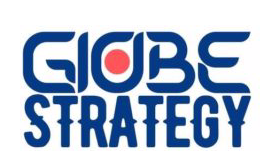Jaguar Land Rover(JLR) is reported to need around $400mn for its expansion plans in 2013 and it turns once again to the city state of Singapore. TML holdings Pte, a wholly owned subsidiary of TATA motors has issued S$350Mn worth of notes at 4,25%. In addition, another TATA subsidiary, Abja Investment Co Pte, has raised S$300Mn at 4.95% there. Plans are on the anvil for a potential fund roadshow that will generate $ 1Bn for JLR.
What is about Singapore and the TATAs? The story begins in in 1972, when JRD Tata was asked by Lee Kuan Yew to set up a precision engineering unit and a training institute. In time, the Tatas would sit on the board of Temasek,the Singapore Economic Development Board and the board of the Monetary Authority of Singapore. Perhaps a common belief in mercantilism and the ‘state’ control of strategic industries was the key driver of the partnership. Tata would go one to invest in the state with the Indian government blessing.
The closeness of the TATAs to Singapore would prove beneficial in 2008 when Tata was bidding for JLR and this is where our story of eastern protectionism begins.
In February 2008, the Indian Army made a move towards seeking a replacement for the aging Czech owned TATRA platform for its Light Specialist Vehicle (LSV). TATA motors was pitted against Ford owned Land rover and it seemed that Land rover would be better placed to win the contract.The land rover offer was the multi-platform Defender which included a weapon platform for machine guns, a dedicated communications vehicle and optional ambulance operations. Although the TATAs were partners of the Indian Army from 1958 and a ‘national interest’ champion, the four military variants of the Defender—the backbone of the British Armed Forces was better placed to win the 55,000 vehicle deal.
But Land Rover was foreign owned . The Indian Army and by extension, t
he government wanted to reduce its dependence on imports, have
indigenous produced combat vehicles and own intellectual property rights for the source codes for any Vehicles, to prevent conflict of interest during any an insurgency.Automobile firms in private sector like the TATAs and Mahindras would now play a bigger role in the years ahead to spearhead the acquisition of assets,
The opportunity to have an Indian owned supplier to the Indian Army would come later in 2008.
As Ford began seeking suitors for Jaguar and Landrover, the TATAs would enter the race along with Mahindra. The business press had a field day reporting on the upstart from India trying to take over iconic British Brands.
Max Warburton, a leading global automotive analyst is reported to have termed it a ‘ romantic act’ on the part of an Anglophile. ”No one would make profits from Jaguar”. Ford knew that selling Jaguar would be difficult and insisted that both brands would be sold together.
TATA motors would go on to buy JLR using Singapore as the base for funds syndicated by a consortium led by the State Bank of India and using a SPV set up there. Funds would come in from Royal Bank of Scotland, the Governments of India and Singapore, HSBC, CITIBANK, other Indian State owned financial houses and of course , Singapore’s sovereign fund, TEMASEK.
Why would the TATAs buy a loss making car brand in the recession of 2008? There was no operational synergy with TATA motors. Sentiments aside, it made no sense unless the real target was Land Rover and the Indian Army’s need.
We now know that this was the reason. The Indian Army last week is reported to have completed field trials of the Defender and Discovery platforms. The company has released a media statement that it expects to get over two-thirds of the $10bn business. In other words, around 42,000 new land rovers or almost 30% of current production targets will be produced for one key customer.
Economic nationalism, supported by government institutions is the new trade objective. Move over, the US and the traditional concept of imperialistic entry modes.
The East has perfected the art of economic warfare, if one is to look critically at the many Chinese and Indian mega takeovers of strategic assets.
In the scheme of things, the Indians have been laughing all the way to the bank. Buying a strategic national interest resource for $2.3Bn using low cost global funds,then turning the car business into profits on the basis of demand from emerging markets, and now owning a game changing capability.
A example of the rise of new protectionism from the East!
